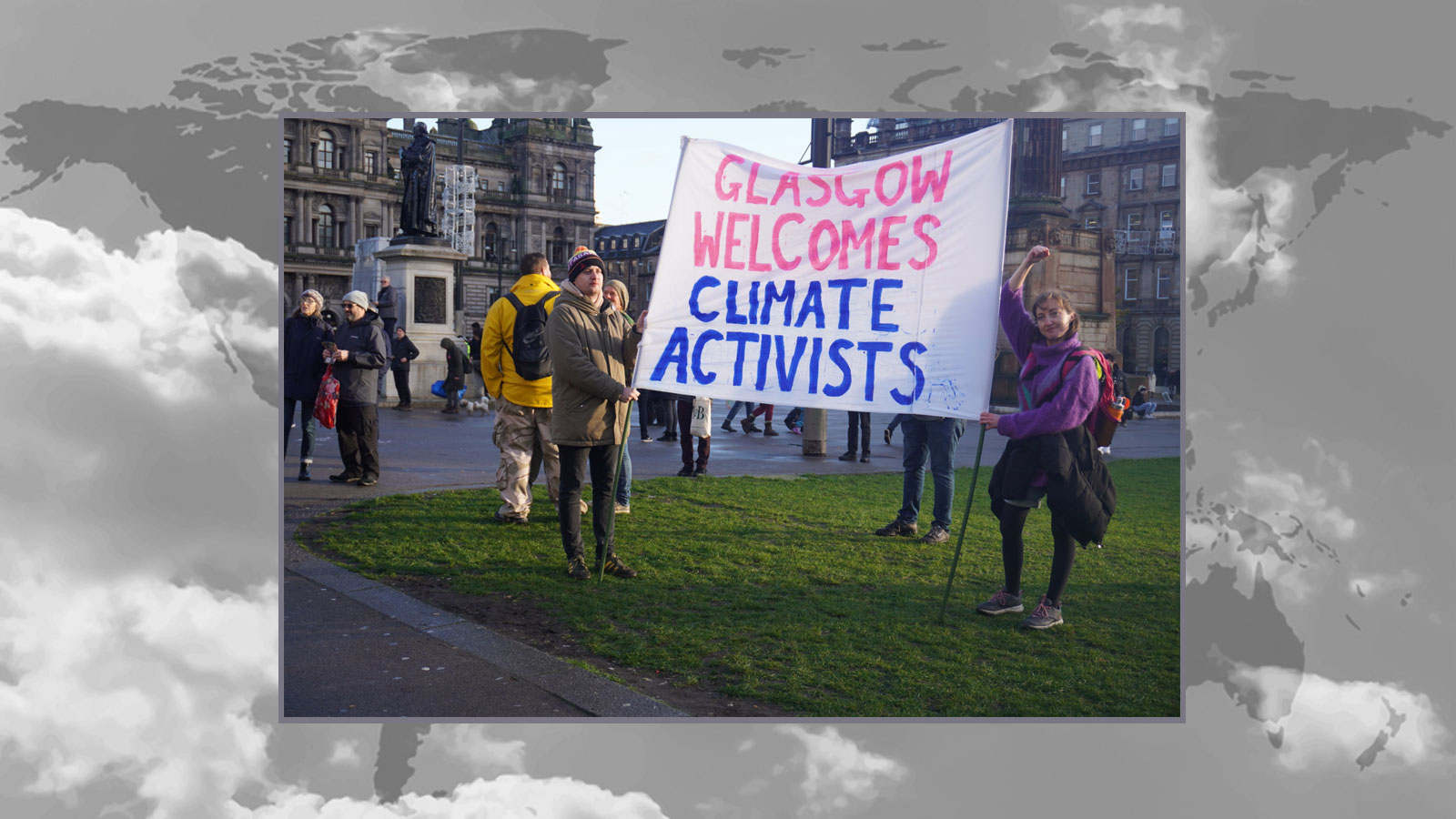GLASGOW, SCOTLAND COP 26 – Being on the ground in Glasgow, Scotland, for COP26 is a strange and humbling experience. A quick search for news coverage on COP26 online brings up headlines that feature what Swedish activist Greta Thunberg is saying about the conference.
I applaud her work tenfold, but implore the media to dig deeper and move beyond the number of clicks her name might garner for their outlets. Audiences around the world need to better understand the deep and sobering context of this moment of history-in-the-making.
The work happening here is fast-paced, desperate, hopeful, angering, innovative, rooted in community … and frustrating. So many stories here plead to be heard as the world heads for further warming on a runaway train of emissions with no end in sight. And yet, so many voices are not present that should be, and their absence is felt across all civil society participants here who are finding this COP one of the most inaccessible in history.
Steel barriers and yellow-vested police bar entry
So, what does it truly feel like to be here at COP26?
The behemoth conference venue is encircled by steel fencing and police with neon yellow vests, stationed together in clumps every 10 feet or so. To get inside the COP, a daily negative lateral-flow COVID test is required. Folks have made it a habit to swab their noses immediately upon arriving each morning, or doing the tests together over breakfast, awaiting the single pink line on the plastic test kit that allows another COP day ahead of us.
After weaving through crowded lines and flashing an official badge to get inside, we find the hallways full of bustling and chatting, masks adorned and coffees in hand. Camera crews everywhere record the bustle. A quick glance at the color of peoples’ badges signifies media (brown), an observer (yellow), or a member of an official negotiating party delegation (pink), along with a few other attendee statuses.
The pavilion section is packed with each country’s official space for hosting events, sharing their action initiatives, and welcoming folks in with coffee, alcohol, and other local items from their countries. The allure of grandiose venues is balanced with long mundane waits in line, grabbing coffee, and retracing your steps once realizing you’ve been hurrying in the wrong direction for a session starting in just minutes.
Many NGO ‘observers’ … most unable to really observe or participate
Media buzz with the inaccessibility of COP26, their frustrations well founded. Despite being badged as “observers,” our own delegation has yet to observe an official session of negotiations on the reason we’re all here – the rulebook of the 2015 Paris Climate Agreement. The UK presidency and host of this COP had promised the “most accessible COP ever.” It’s a promise truly too lofty in a time of overlapping crises – the impacts of climate change and COVID restrictions and numerous obstacles that prevented many from attending this year, in particular those from the Global South. I shoulder the privilege and responsibility of attending each day as a white woman from the U.S., and it’s important to acknowledge that reality.
With transparency critical and pledges from world leaders largely just aspirational in the absence proof of commitment, civil society attendees yearn for openness and truth. Despite all the shared bustle in the halls, we each day walk the hallways of a kind of bardo – a gap between two different worlds and the realities of inadequate climate action.
There is the closed-door COP26 where negotiators work on the text of the Paris Agreement rulebook and world leaders make pledges on stage. And then there is the civil society COP26, with nongovernmental observers pushing for access to the negotiators and asking that the voices of those not present, and systemically un-included, to be engaged in solutions.
Largest COP26 delegation – fossil fuel interests
The sense of two worlds is even more distinct outside the official COP zone. There, we’ve had the chance to march with tens of thousands, led by Indigenous activists from around the world and attending the People’s Climate Summit or “Counter COP.” It’s here that one finds the perspectives of youth, Indigenous voices, and those wanting ambitious climate action, and here that one finds a sense of hope that people, united, will be the ones to create and sustain change.
On a personal level, climate stories are what this conference is all about. It’s about whose stories are present at the COP and whose are missing. Voices of Black, Indigenous, and People of Color communities are what world leaders need to hear and take heed of: the every-day people and organizations who have solutions embedded in their cultures and communities.
Regrettably, those are the very voices under-represented as the barriers to attend COP26 range frojm visa acceptance, scarcity of badges, and inadequate financial resources to COVID travel restrictions. It’s even more ironic to discover, as BBC has reported, that fossil fuel lobbyists outnumber the largest country delegations at COP26.
It’s time to treat the climate crisis like the emergency it is, and the pressure is felt in the halls of COP26. People here are demanding action for their lives, grieving those already lost and in a spiral of losing. The massive rotating globe in the halls of the conference hangs above, reminding us of what’s at stake amid the closed-door speeches, the plenaries, and the scores of thousands marching in Glasgow and globally: our homes: our cultures, our lives, and all forms of life with which we share this planet.
Lauren Boritzke Smith is Communications and Marketing Manager with the Minnesota-based nonprofit Climate Generation: A Will Steger Legacy, co-leading a delegation to the COP26 meetings.
Source link


